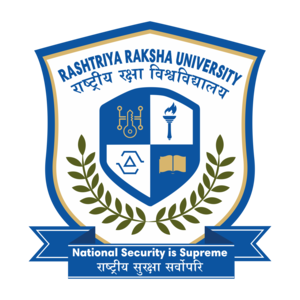
The Game Changing Verdict on Padmanabha Swami Temple: A Decoding
The Game Changing Verdict on Padmanabha Swami Temple: A Decoding
- Eilin Maria Baiju, GNLU, Gandhinagar
A peep into the History of Travancore Dynasty
A temple built in 18th century, located at the heart of Kerala capital Thiruvananthapuram (The City of Lord Ananta), well known for it’s intricate fusion of the Chera and Dravidian style of architecture. Padmanabha Swami Temple is the richest temple in the world, with treasures in vaults value over $1trillion.
As far as history goes, on 17 January 1750, the most powerful ruler of Travancore Anizham Thirunal Marthanada Varma, surrendered his kingdom and made Thrippadi Danamto Lord Padmanabha Swamy (Vishnu), the deity at the temple, and pledged that he and his descedents would be vassals or agents of the deity who would serve the kingdom as Padmanabha Dasa. Over the last 21 years, since the death of the last ruler Chithira Thirunnal Bala Varma, issues have been going on, regarding the shebaitship of the Trust which looks after the Temple. This blog is written in an earnest attempt to analyse the recent Supreme Court Judgement in Sri Marthanda Varma (D) Through Legal Representatives v. State of Kerala and others. This Blog seeks to discuss in detail why this verdict, is not only a landmark judgement but a possible game changer too.
The string of problem
After India gained Independence on August 15, 1947, an Agreement of Accession was signed between the two princely states( namely Cochin and Travancore), represented by the kings with the government of India as party, which came into force on August 1,1949. By the virtue of the Covenant in the Accession Agreement and later by operation of Section 18 (2) of the Travancore Hindu Religions Endowments Act, 1950 (TC Act), the administration of the Sree Padmanabha Swamy Temple, is vested in trust in the Ruler of Covenanting State of Travancore. The last ruler, Sri Chithira Thirunnal, died at the age of 78, in 1991 following a stroke. He didn’t have any legal heir in his two marriages. This left his brother Uthradam Thirunal Marthanda Varma to lay claims to shebaitship. This is when the problem started, because the new ruler cannot be considered as a legal heir to the throne if one goes by the marumakkathaayam system of customary inheritence. It’s a dead end as there is no alter rule for succession, at the same time the trust which looks after the temple is vested in the last Ruler of Travancore.
In the year of 2011, the Kerala High Court Judgement in the same case Uthradam Thirunal Marthanda Varma and Sree Padmanabhaswamy Temple V. Union of India and others on January 31 against which an appeal went in the Supreme Court. A key factor to be noted is that the usage of word ‘shebait’(derived from ‘sewa’ which means service) in the judgement occurs only once which is an alternative to trustees, and ‘shebaitship’ doesn’t occur at all. By the abolition of Constitution 26 Amendment Act,1971, the privy purses, privilege and other special rights of the erstwhile rulers of Indian States were abolished by deleting Articles 291 and Aryicle 362 and whereby incorporating Article 366(22) in the constitution. The challenge against this action of the government was overturned in RaghunathraoGanapatrao v. Union of India.The Kerala government put forward this and argued that, with this amendment the concept of Ruler came to an end, the shebaitship of the royal family is at a dead end and hence should be transferred under the State Devaswom Board like any other temple for better supervision.
Whereas, in the recent Judgement by the Supreme Court of India, set aside the Kerala High Court’s 2011 verdict, which had directed the State to set up a trust to take control of management and assets of the temple the use of word ‘shebait’ occurs 187 times and the word ‘shebaitship’ (trusteeship) occurs 72 times, which is indeed a major highlight. The Court also pointed out that the trusteeship is a settled law, the duty and personal interest blended together, they invest a character of property right. The shebaitship has passed from Ruler to Ruler over time. Just because the ruler didn’t leave a legal heir behind, it doesn’t mean that the British policy of Doctrine of Lapse or escheat, will be followed and the state will take in charge. It is the Covenant that let the management of the temple under the supervision of Ruler, Advisory committee and Administrative Committee. Apart from the Ruler doesn’t have anything to do with the shebait of the temple.
The Supreme Court of our country made it clear that the High Court’s judgement was blatantly erroneous and certainly flu in the face of the existing history of the covenant and the spirit behind protection of the Royal Family, under the Travancore Act of 1950. The direction of a secular judicial institution which strips the religious institution of it’s sanctity and then sanctified it in a judicial order, then the entire institution is transferred to a so called secular body cannot be entertained at any cost. The Kerala High Court judgement transgressed cannons of reasonableness, expectation and freedoms of Fundamental Right of Religious Freedom. This is a clear indication why this judgement is a very landmark judgement as it would lead to an increased consensus in society as far religion and politics are concerned.
Why should be the rights of the Royal Family be respected?
When Chithira Thirunnal entered into a covenant with the Union of India back in May 1949, there is a clause in the said document which is Article 8, where it promises that the rights and the control over the management of the Pamanabaswami Temple shall not be interfered with, not just in the Ruler’s life time but also to his successors. The rest of the temples form part to the Travancore Devaswom Board like most of the other temples in Kerala. But this particular temple falls under the exclusive domain of the Ruler of Travancore because of the special relationship with the temple as mentioned in the introduction.
Apart from the covenant, if one goes through the history, it can be seen that the Travancore royal family has shown a high degree of credibility, in the administration of the temple and also protecting the huge treasure in its vault. In addition to this the customary rituals and practices are protected and carried out without any hindrance till date. In 1811, when the British decided to take over the temple administration, the royal family protected and even hid it from the ‘ogling-look’ of British. Even at the times were the temple owed British and failed to meet it’s ends, the royal family kept their word and protected the treasures even when they had an option to use it and whereby kept their word. There had been instances of administrative lacunae, but that doesn’t mean that the Royal Family has to be removed from its existing position.
Why is this case a possible game changer?
The two-judge bench comprising of Justice U.U Lalit and Indu Malhotra set the normal the country needed. It indirectly stated that protecting acceptable faith and rituals are a part of the heritage of this country and religion and faith are purely private matters. Politics should not interfere in faith and faith should not interfere in politics. The verdict has brought solace to devotees ad respected our sense for truth and justice. By this judgement it stated it is high time regulatory measures are to be made in the state to prevent plundering of the public in the name of god and Faith.
REFERENCES :-
1. V Venkatesan, ‘Decoding the SC\'s Decision to Uphold the Travancore Royal Family\'s Temple Privileges’(wire in,17 July 2020) <https://thewire.in/law/travancore-royal-family-padmanabhaswamy-temple-supreme-court>accessed on 26 June 2020.
2. SC verdict on Padmanabha Swamy temple game changer: Ex-chairman of committee(The New Indian Express, 13 July 2020) <https://www.newindianexpress.com/states/kerala/2020/jul/13/sc-verdict-on-padmanabha-swamy-temple-game-changer-ex-chairman-of-committee-2169190.html> accessed on 29 June 2020












